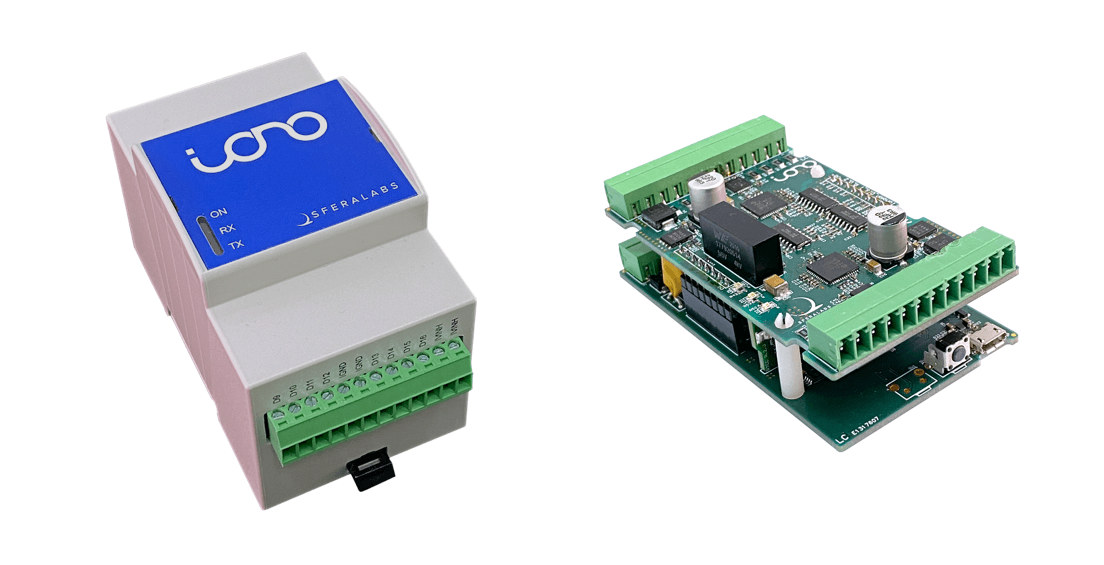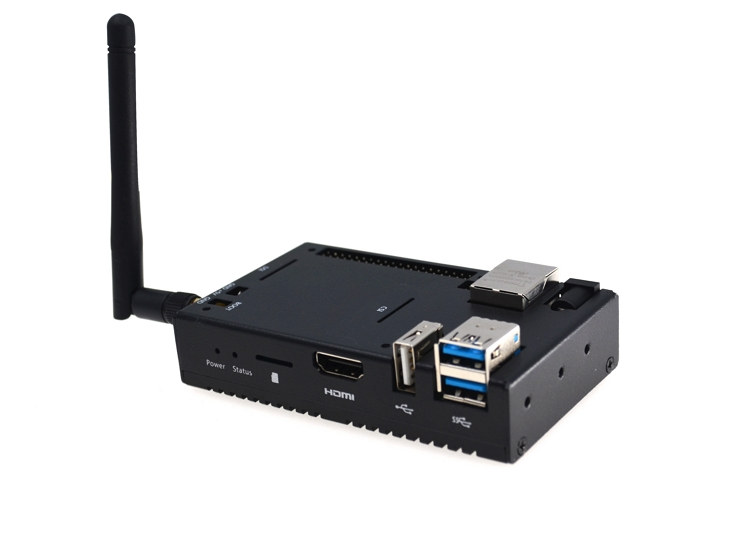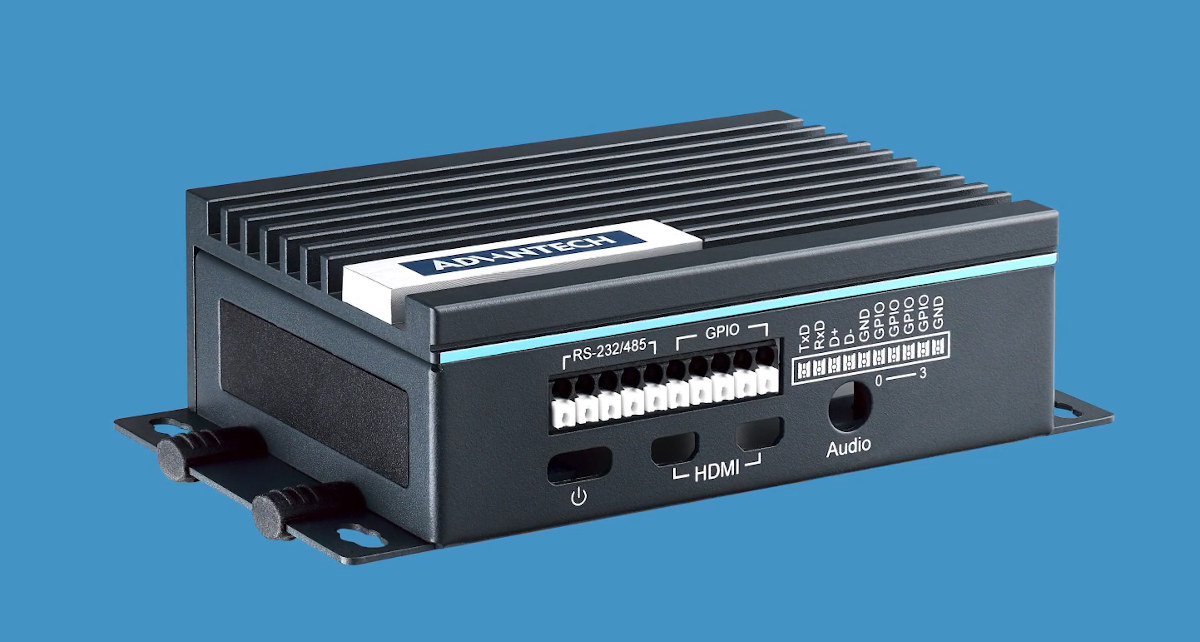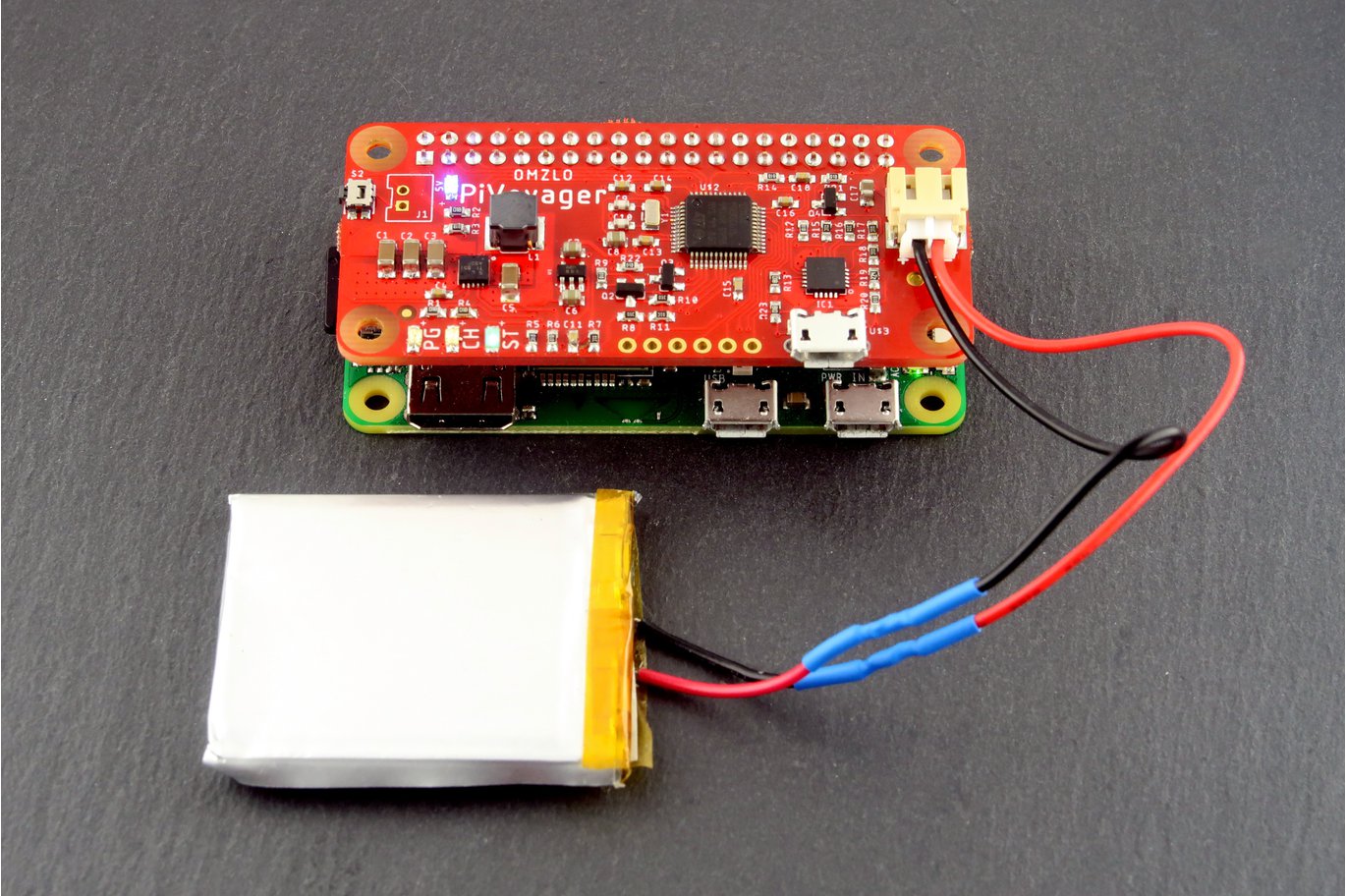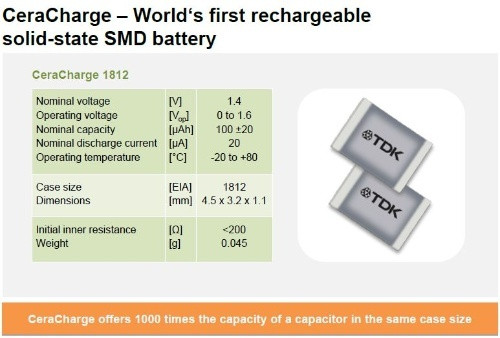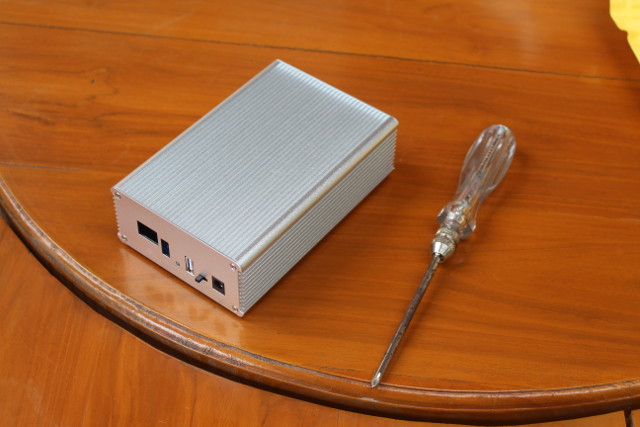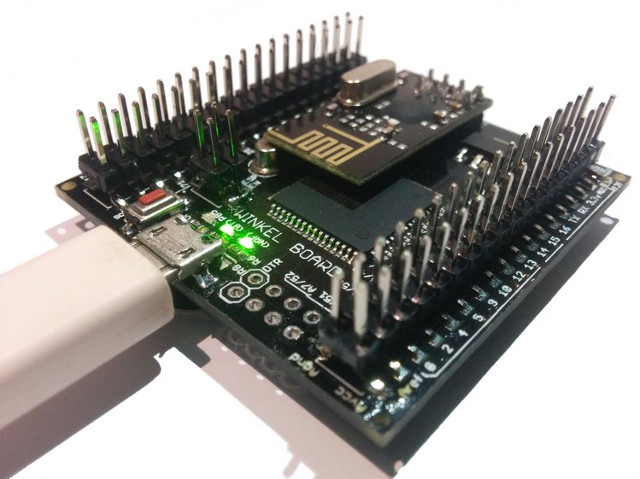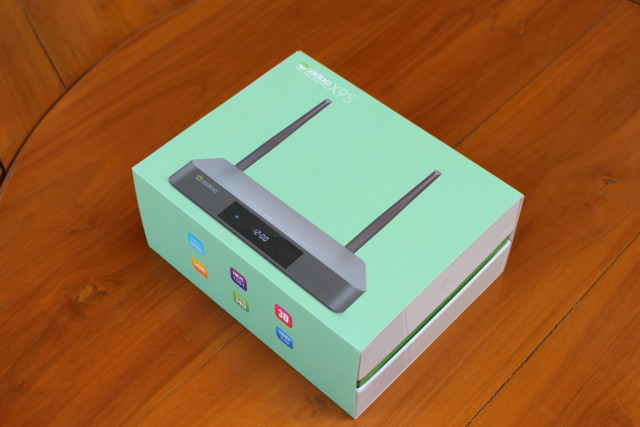Sfera Labs has launched another Raspberry Pi RP2040-based hardware platform with the Iono RP D16 industrial IO module following the Exo Sense RP multi-sensor module we covered last month. The Iono RP D16 module provides sixteen digital 24V I/O lines, an RS-485 serial interface, a wide range 12-28V power supply input, and its DIN-rail case enables installation in electrical cabinets and automation control systems. Iono RP D16 specifications: MCU – Raspberry Pi RP2040 dual-core Arm Cortex-M0+ microcontroller @ 133MHz with 264kB on-chip SRAM Storage – 16MB SPI flash Inputs/Outputs via terminal blocks Up to 16x 24V 640mA outputs driven by high-side switches that can also be configured as push-pull drivers for high-speed switching (via MAX14912 chips) Up to 16x 24V IEC 61131-2 compliant current-sinking inputs (via MAX22190 chips) 4x TTL level I/Os (1-Wire, I2C, Wiegand support) Serial – RS-485 interface to the RP2040 serial lines via terminal block with electrostatic […]
Raspberry Pi CM4 Nano industrial mini PC supports wide temperature range, 12-18V DC input
If you ever wanted a mini PC similar to Raspberry Pi 4 but working within a wider temperature range and supply voltage, as well as a few extra features, the Raspberry Pi CM4 Nano industrial mini PC with a metal enclosure might be worth looking at. Based on the EDATEC CM4 Nano carrier board, the mini PC supports Raspberry Pi CM4 with up to 8GB RAM, 32GB storage, optional WiFi 5 and Bluetooth 5.0, and offers one HDMI port, a flat cable HDMI + Touchscreen connector, Gigabit Ethernet, three USB 3.0 ports and more. It works in settings with -25 to +60°C ambient temperature and offers a 12-18V DC input. EDATEC (Raspberry Pi) CM4 Nano specifications compared to Raspberry Pi 4 SBC: The company uses the Raspberry Pi OS image for the board plus a Board Support Package (BSP) specific to CM4 Nano to support extra features like the RTC: […]
Advantech UNO-220 is an Industrial RS232/RS485 Gateway Kit for Raspberry Pi 4
While Raspberry Pi SBCs are mostly designed for the education market, they find their way in various devices, even in the industrial market with products such as ModBerry M500 industrial computer, Compulab IOT-GATE-RPi industrial IoT computer, BB-400 Neuron Edge industrial controller, and many others. All those offer RS-232 and RS-485 ports besides other interfaces typically found in industrial applications like isolated inputs, CAN buses, and more. There’s now yet another option with Advantech UNO-200 industrial gateway kit for Raspberry Pi 4 board with RS232/RS485 header and RTC battery. Advantech UNO-220 specifications: Compatible SBC – Raspberry Pi 4 Model B with dual micro HDMI outputs, audio jack, as well as USB and Ethernet ports accessible through the enclosure I/O Interfaces GPIO – Input (GPI) 0-3: VIH: 2~5V VIL: 0 ~ 0.8V; Output (GPO) 0-3: 0 ~ 5V Serial Ports – 5-pin terminal block for RS232/485, automatic direction control, 300 ~ 115.2kbps […]
PiVoyager is a UPS for the Raspberry Pi With a Real-Time Calendar Clock
The Raspberry Pi is a powerful SBC (Single Board Computer), and aside from being used for everyday computing stuff, the Raspberry Pi can be embedded as the brain of various projects. Using the Raspberry Pi for standalone projects do create some concerns about power. How do I power the Pi? Should I get a power bank? Or maybe I need a longer wired connector. If powering your Raspberry Pi based project has always being a concern to you, then you don’t have to worry about it again with the introduction of the PiVoyager. The PiVoyager is an uninterruptible power supply (UPS) for the Raspberry Pi specially designed to work with standard Li-Ion or LiPo batteries. It is shaped in the form a Pi Zero HaT making it fully compatible with PiZero form factor, but nevertheless, it will still work with any Raspberry-PI having the conventional 40-pin header found in the Pi […]
TDK CeraCharge Solid State Battery-in-a-Chip is Designed for IoT & Wearables
We’ve recently seen solid state batteries are prone to dislodge current Lithium Ion battery technology as they are safer, support higher energy density, and faster charging. Such batteries are expected to be seen in car in the first part of the next decade, in smartphones starting possibly in 2019, but TDK has just announced their own CeraCharge rechargeable solid state SMD battery with mass production scheduled to start in April 2018. TDK CeraCharge battery-in-a-chip will come in compact EIA 1812 package (4.5 x 3.2 x 1.1 mm), offer a capacity of 100 µAh at a rated voltage of 1.4 V, and can be recharged up to 1000 times. Potential applications include IoT devices, real-time clocks, Bluetooth beacons, and systems for energy harvesting. The battery – which will look very similar to an SMD capacitor – does not include liquid electrolyte, and instead uses a solid ceramic element as electrolyte which rules out any risk of fire, explosion, […]
NanoPi NEO NAS Kit Review – Assembly, OpenMediaVault Installation & Setup, and Benchmarks
NAS Dock v1.2 for Nano Pi NEO / NEO 2 is, as the name implies, a complete mini NAS kit for 2.5″ drive for NanoPi NEO or NEO 2 board. The NEO 2 board is strongly recommended, since it’s not much more expensive, but should deliver much better results due to its Gigabit Ethernet interface. I’ve received two of those kits together with several other boards & accessories from FriendlyELEC, and today I’ll show how to assemble the kit, configure OpenMediaVault, and run some benchmarks. NAS Kit V1.2 Assembly with NanoPi NEO 2 Board The only extra tool you’ll need is a screwdriver, and potentially a soldering iron as we’ll see further below. The metal box is stuff wih accessories so the first thing is to open one or two sides to take out the content. We have the mainboard, NanoPi NEO back plate, NanoPi NEO 2 back plater, a […]
$24 Winkel Arduino Compatible Board Includes WiFi, Bluetooth, 2.4 GHz RF, and an RTC (Crowdfunding)
There are plenty of Arduino compatible boards with WiFi based on ESP8266 WiSoC going for around $5 to $10, and with ESP32 processor, we are starting to have $15 to $20 boards with both WiFi and Bluetooth, but while ESP-IDF SDK has been progressing nicely, some parts of Bluetooth functionality are still not implemented. Winkel board offers an interesting alternative by offering WiFi, Bluetooth, 2.4GHz ISM, and an RTC for $24. Winkel board specifications: MCU – Microchip/Atmel ATmega128 MCU @ 16 MHz with 128KB flash memory, 4KB SRAM, 4KB EEPROM Connectivity WiFi 802.11 b/g/n via ESP12E module based on ESP8266 Bluetooth 2.0 + EDR via HC-05 module RF Radio – NRF24l01 2.4 GHz ISM radio. (Note: It might be possible to use it for Bluetooth LE connection, see here and there). I/Os (through both Atmel MCU and ESP8266) 38x Digital I/Os 7x PWM Digital I/Os 8x Analog Inputs USB – […]
Zidoo X9S (Realtek RTD1295) Android TV Box Review – Part 1: Unboxing and Teardown
Zidoo X9S is one of the first Realtek RTD1295 based TV boxes coming to market, and it has some pretty special features like running both Android 6.0 and OpenWrt simultaneously, HDMI input support for video recording and PiP, an external SATA interface, 4K media capabilities including HDMI 2.0a output, 4K 60 fps H.265 and VP9 & 4K 24 Hz H.264 video decoding, as well as HDR and 3D support. You can find the full Zidoo X9S specification in my previous post. The company has now sent me an early review sample, and in the first part of the review you’ll post photos of the devices and accessories, and perform a teardown to find out more about the electronics and thermal design. Later on I’ll publish articles with benchmarks, video performance, and the complete review. Zidoo X9S Unboxing The box comes in a light green retail package showing some of the […]


